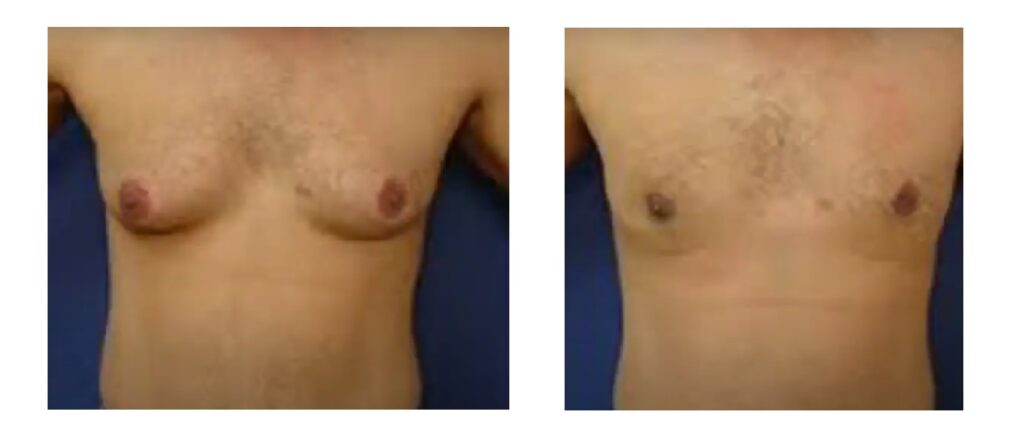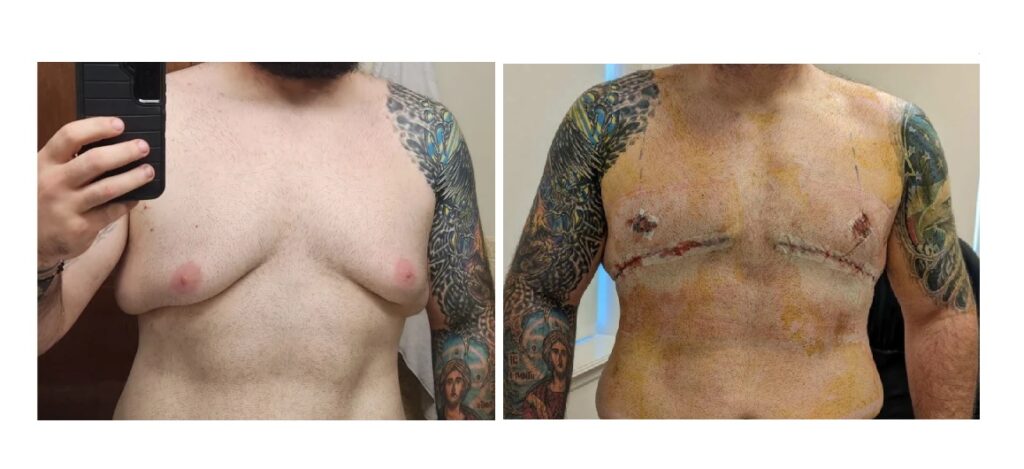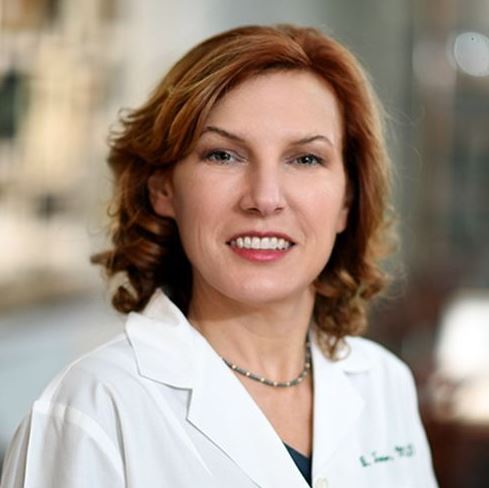Surgery is an effective treatment for excessive breast tissue in men. However, it can also be costly and have potential risks and complications. That is why many men consider gynecomastia treatment without surgery.
In this article, we will explore non-surgical treatment options for gynecomastia. I will cover medications, lifestyle changes, compression garments, and natural remedies that may offer a safe and effective alternative to surgery.
By the end of this article, you will understand the non-surgical options available to treat moobs better. And for you, you will discover whether they are suitable for your individual needs.
Causes of Gynecomastia
Gynecomastia is a medical condition that results in the swelling of breast tissue in males. There are varieties of factors that can cause man boobs. They include hormonal imbalances, medications, health conditions, and lifestyle factors.
Hormonal imbalances, such as an increase in estrogen or a decrease in testosterone, can lead to the development of moobs. In addition, certain medications, including anabolic steroids and some anti-depressants, can also cause breast tissue enlargement.
Health conditions like liver disease and some types of cancer can be underlying causes of gynecomastia. In addition, lifestyle factors such as diet and exercise habits may also contribute to the development of this condition.
Understanding the different causes of excessive breast tissue is important for developing effective treatment plans addressing the underlying factors contributing to the condition.
Gynecomastia Treatment Without Surgery Options
The four non-surgical gynecomastia treatment options are medications, lifestyle changes, compression garments, and natural remedies. In summary, here is what each of those remedies comprises.

1. Gynecomastia Medications
- Hormone therapy
- Selective estrogen receptor modulators (SERMs)
- Aromatase inhibitors
2. Lifestyle changes
- Weight loss
- Exercise
- Diet modifications
3. Compression garments
- How they work
- Effectiveness
4. Natural remedies
- Herbal supplements
- Essential oils
Gynecomastia Medications
Hormone Therapy
Hormone therapy is a non-surgical treatment that restores natural hormonal balance through testosterone replacement therapy (TRT). This therapy can be helpful for men with low testosterone levels, a common cause of gynecomastia.
The therapy uses testosterone supplements to help balance the hormonal imbalances causing the excessive breast tissue.
Selective Estrogen Receptor Modulators (SERMs)
SERMs are another non-surgical medication option that your doctor can use to treat moobs. These drugs work by blocking the effects of estrogen on breast tissue, which can help to reduce the size of breast tissue in men. Some examples of SERMs include tamoxifen and raloxifene.
Aromatase Inhibitors
Aromatase inhibitors are non-surgical medications that block the conversion of testosterone into estrogen. That can help reduce estrogen levels in the body, reducing the size of breast tissue in men.
Typically, doctors use aromatase inhibitors to treat breast cancer, but they can also use them to treat gynecomastia in some cases.
It is important to note that while these medications can be effective for some patients, they may not be suitable for everyone.
We recommend that you discuss with a healthcare provider about the potential benefits and risks of each medication. They can help you determine which option is the best for you.
Lifestyle changes to treat gynecomastia
Non-surgical lifestyle modifications, such as weight loss, exercise, and diet modifications, can be effective treatment options for gynecomastia. Here is how each of these lifestyle changes can help treat this condition:
Weight Loss
Gynecomastia can sometimes occur because of excess body fat, which can increase the amount of estrogen in the body. Losing weight can help to reduce the amount of body fat. In turn, that can reduce the amount of estrogen and decrease the size of breast tissue.
Losing weight through healthy eating and exercise often helps patients reduce excessive breast tissue.
Exercise
Regular exercise can help to reduce body fat and increase muscle mass, which can help to reduce the size of breast tissue in men.
Specifically, strength-training exercises that target the chest muscles can help to tighten and tone the area, which can help to reduce the appearance of gynecomastia. Additionally, cardiovascular exercise can help to burn fat and improve overall health.
Diet Modifications
Certain dietary modifications can help reduce breast tissue size in men with excessive breast tissue. For instance, consuming more fiber and protein can help reduce body fat while avoiding foods high in estrogen.
Foods such as soy products can help to reduce estrogen levels in the body. Limiting alcohol consumption can also be beneficial, as alcohol can increase estrogen levels and contribute to developing gynecomastia.
Lifestyle modifications alone may not be sufficient for all cases of man boobs. That is particularly true when underlying hormonal imbalances or other medical conditions are the cause.
However, incorporating lifestyle changes alongside other gynecomastia treatments, such as hormone therapy or medication, can help improve the treatment’s effectiveness.
Compression garments
Compression garments are a non-surgical option for managing gynecomastia. And your healthcare provider may recommend them as an initial treatment option. Compression garments work by applying pressure to the chest area.
That flattens the breast tissue and creates a more masculine appearance.
Compression garments are often made of synthetic materials, making them tight-fitting. They may resemble a tight-fitting undershirt or vest, and some may have a front closure.
The garment’s compression can help reduce swelling, which is often associated with excessive breast tissue. Additionally, the garment can help support the chest area, reducing discomfort and pain.
However, compression garments are not a cure formoobs and may not be effective for all individuals. Instead, you should consider the other gynecomastia treatment without surgery.
In some cases, surgical intervention may be necessary to address the underlying causes of excessive breast tissue.

Natural remedies for gynecomastia
Surgery is often the most effective treatment option, but natural remedies may help lessen some of the symptoms associated with excessive breast tissue. The two most common natural remedies for gynecomastia are herbal supplements and essential oils.
Gynecomastia Herbal supplements
1. Turmeric
Turmeric is a spice that has anti-inflammatory and antioxidant properties. Most Indian and Middle Eastern cuisines included it as one of the main spices. Proponents claim it helps reduce breast tissue inflammation and pain associated with gynecomastia.
Turmeric supplements are available in capsules, and the recommended dosage is typically 400-600 mg, taken three times per day.
2. Ginkgo biloba
Ginkgo biloba is a medicinal herb that the Chinese have used for centuries to treat various ailments. It has antioxidant and anti-inflammatory properties, and they believe it can help improve blood flow and reduce swelling.
Ginkgo biloba supplements are available in capsules, and the recommended dosage is typically 120-240 mg daily.
3. Tribulus terrestris
Tribulus Terrestris is a plant used in Indian and Chinese traditional medicine to treat various conditions, including male sexual dysfunction. Alternative medicine practitioners say it helps regulate testosterone levels, which can benefit men with gynecomastia.
Tribulus Terrestris supplements are available in capsules, and the recommended dosage is typically 250-1500 mg per day.
Essential oils for treating gynecomastia
1. Lavender oil
Lavender oil is a popular essential oil that has a calming effect and can help reduce stress and anxiety. It also has anti-inflammatory properties and can be beneficial for reducing breast tissue inflammation and pain associated with man boobs.
You can apply lavender oil topically to the chest area by adding a few drops to carrier oil (such as coconut oil). Another is to use a lotion or cream that contains lavender oil.
2. Tea tree oil
Tea tree oil is another essential oil that has anti-inflammatory and antibacterial properties. It can be beneficial for reducing inflammation and swelling associated with excessive breast tissue.
You can apply tea tree oil topically to the chest area in two ways. One is adding a few drops to a carrier oil such as coconut oil, and two is using a lotion or cream containing tea tree oil.
Natural remedies may not be effective for all individuals, and surgical intervention may offer the fastest treatment. Moreover, you must get a healthcare provider to address the underlying causes of your gynecomastia.
Potential Risks and Limitations of Non-Surgical Treatments
Gynecomastia treatment without surgery is generally safe and effective. However, you should be aware of some potential risks and limitations. These risks and limitations vary depending on the specific treatment method used.
Here are some potential risks and limitations of some of the most common non-surgical treatments for removal of excessive breast tissue.
Hormone Therapy
Hormone therapy can effectively treat gynecomastia caused by low testosterone levels. However, some researchers link testosterone therapy to several side effects, including acne, hair loss, breast tenderness, and mood changes.
In addition, hormone therapy may not be appropriate for all patients, particularly those with a prostate or breast cancer history.
Selective Estrogen Receptor Modulators (SERMs)
SERMs can be effective in treating gynecomastia by blocking the effects of estrogen. However, these medications may have side effects such as hot flashes, headaches, and blood clots.
They may also not be effective for all cases of moobs, particularly if the underlying cause is not hormonal imbalance.
Aromatase Inhibitors
Aromatase inhibitors can help reduce estrogen levels in the body and shrink breast tissue in men. However, they can cause side effects such as joint pain, fatigue, and bone loss. Additionally, they may not be effective for all cases of gynecomastia.
Weight Loss
While weight loss can effectively reduce the size of breast tissue in men with excessive breast tissue, it may not be effective for all cases. In addition, losing weight too quickly can lead to loose skin, which may exacerbate gynecomastia’s appearance.
Exercise
Exercise can help to reduce body fat and increase muscle mass, which can help to reduce the size of breast fat tissue in men. However, it may not be effective for all cases of gynecomastia, particularly if the underlying cause is not excess body fat.
Diet Modifications
While certain dietary modifications can help reduce the size of breast tissue in men, they may not be effective for all cases of man boobs. In addition, some dietary modifications, such as avoiding soy products, may be difficult to maintain long-term.
Compression Garments
Compression garments can help to reduce the appearance of breasts by compressing breast tissue. However, they may be uncomfortable to wear and ineffective for higher grades of gynecomastia.
Herbal Supplements and Essential Oils
Many users have reported positive when using herbal supplements and essential oils to treat moobs. However, there is little scientific evidence to support their effectiveness.
In addition, these products may have side effects and may interact with other medications, so it is important to speak with a healthcare provider before using them.
Do non-surgical treatments for gynecomastia work?
Gynecomastia treatment without surgery is becoming increasingly popular as men seek to avoid the risks and recovery time associated with excessive breast tissue surgery.
Some of the most common non-surgical treatments for man boobs include hormone therapy, selective estrogen receptor modulators (SERMs), aromatase inhibitors, weight loss, exercise, and diet modifications.
These treatments are generally safe and effective for reduction of excessive breast tissue in men. But they may not be appropriate for all cases of man boobs. Moreover, they may have potential side effects and limitations that patients should consider.
If you are looking for a natural approach, herbal supplements may also be worth considering. Moreover, research is ongoing to fully understand the effectiveness of gynecomastia herbal supplements.
However, many men have reported positive results from using them. If you are considering non-surgical treatments for gynecomastia, you should speak with a healthcare provider to determine the best course of action for your individual needs.
